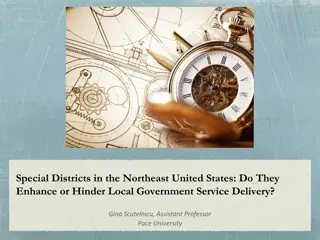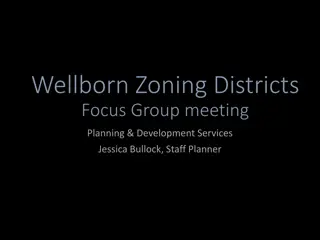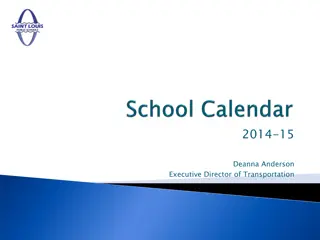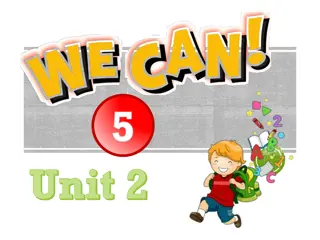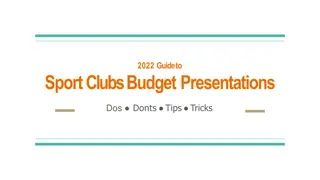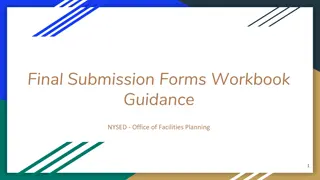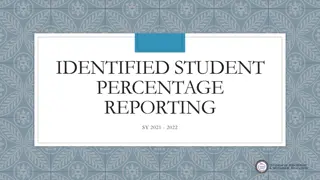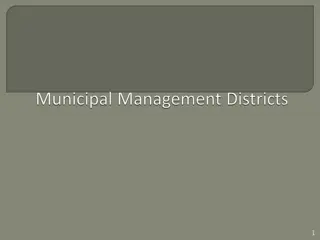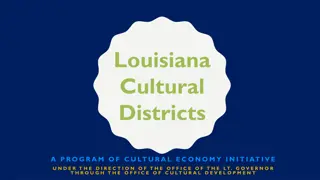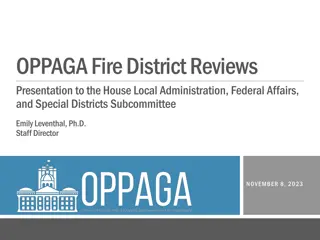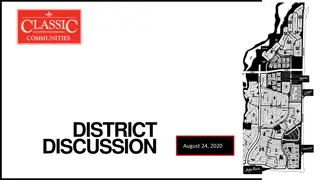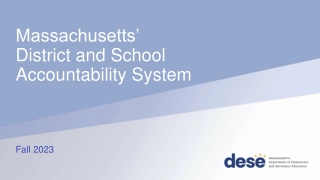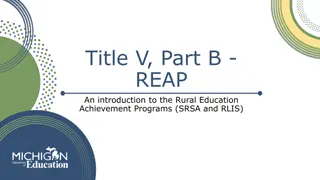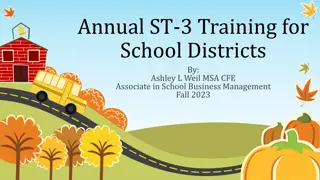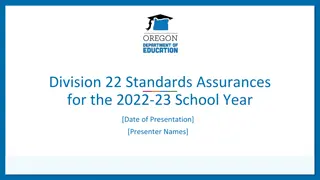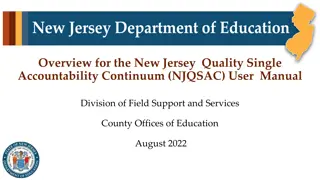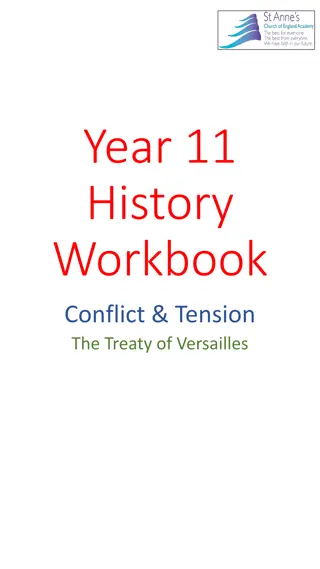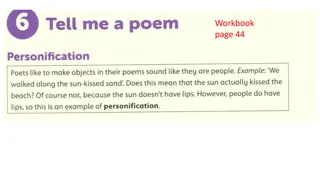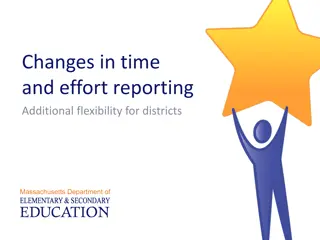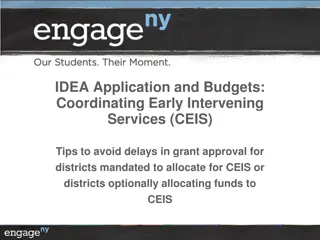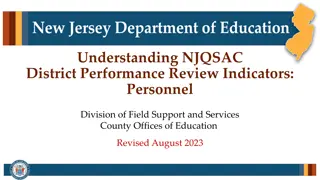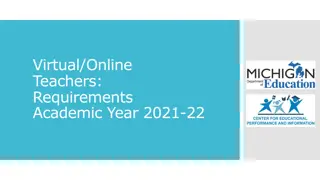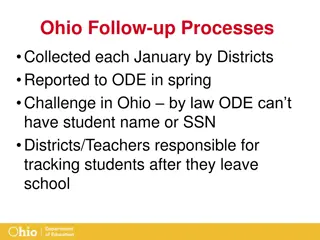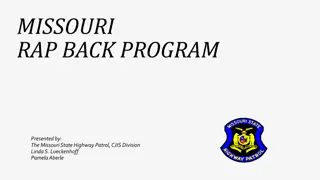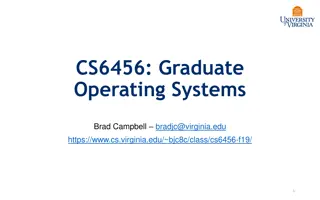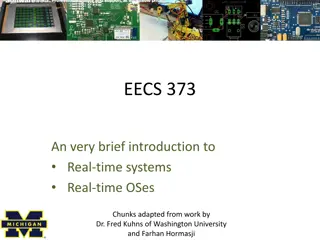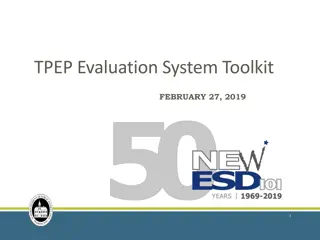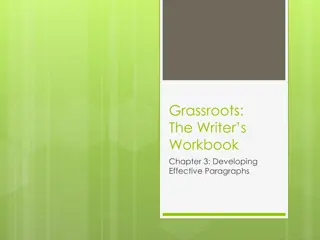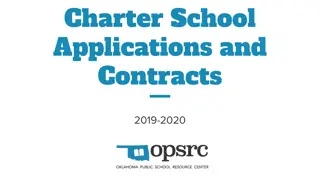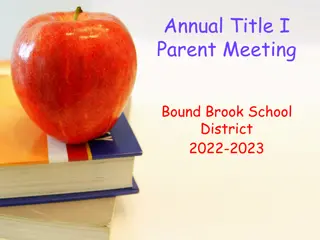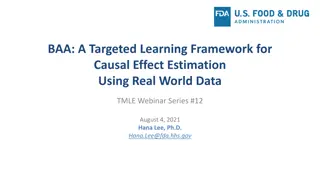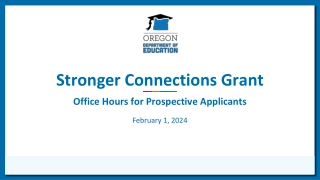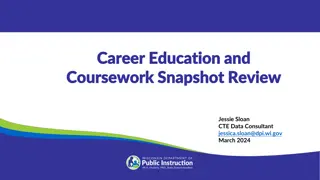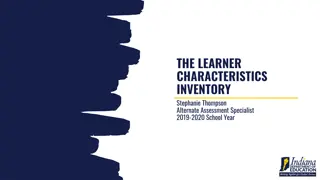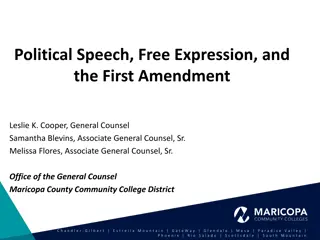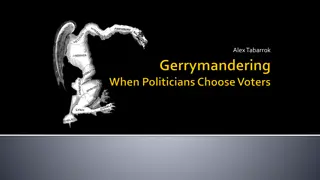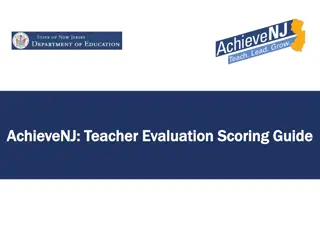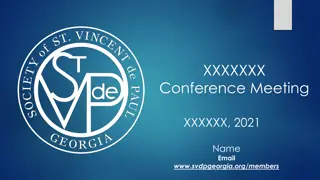Real World Learning Workbook for School Districts
This workbook is designed to assist leadership teams in creating an action plan to implement and enhance real-world learning in their school districts. It involves self-assessment, reflection, and action plan development. The vision, considerations, and action items for real-world learning are explored to help districts align their strategies, define key outcomes, and ensure access and equity for students. The workbook also assesses the maturity of current visions and implementations of real-world learning. Through this resource, districts can progress from initial understanding to sustainable integration of real-world learning practices.
Download Presentation

Please find below an Image/Link to download the presentation.
The content on the website is provided AS IS for your information and personal use only. It may not be sold, licensed, or shared on other websites without obtaining consent from the author. Download presentation by click this link. If you encounter any issues during the download, it is possible that the publisher has removed the file from their server.
E N D
Presentation Transcript
Real World Learning Workbook This workbook is designed to help your leadership team create an action plan implementing and improving real world learning in your school district. In this workbook, you will... Self-assess your progress, Reflect on key questions, and Develop an action plan. For more supporting resources, visit realworld.digitalpromise.org
Real World Learning <<Add District Name>> Action Plan
Our vision for Real World Learning: Write your district s vision statement for Real World Learning here
Vision Self-assess the maturity of your current vision for real world learning Initial School community may understand the value of Real World Learning, but does not share a common definition or intended outcomes Emerging School community is making progress articulating a definition for Real World Learning and/or intended outcomes Operational School community shares a clear definition of Real World Learning and intended outcomes Sustainable School community can articulate a shared, compelling vision for Real World Learning experiences and outcomes that align with other strategic initiatives
Vision Considerations Key questions for establishing a compelling long-term vision: How will we align our RWL strategy with other strategic initiatives? How will we define Real World Learning? How will we ensure our RWL vision aligns with legislation? How will we establish access and equity for students? What are the intended partner outcomes? What are the intended student outcomes of RWL? What are the intended teacher outcomes?
Vision Action Items By the end of the semester... By the end of next year... By the end of the month Led by: Led by: Led by:
Implementation Self-assess the maturity of your current implementation of real world learning Initial Activities to support Real World Learning may be happening, but they are not yet coordinated Emerging Real World Learning Leadership Team has been established to coordinate efforts Operational Real World Learning Leadership Team is empowered to make decisions Sustainable Real World Learning is institutionalized throughout the school system through shared leadership Communication strategy is in development Communication plan is underway with buy-in from many stakeholders Communications about Real World Learning are sporadic Comprehensive communications plan is creating widespread buy-in and participation from stakeholders
Implementation Considerations Key questions for establishing a sustainable implementation: How will we build consensus around our RWL definition and vision? How will we communicate our RWL definition and vision? How will we institutionalize our RWL strategy? Who will lead the RWL implementation strategy?
Implementation Action Items By the end of the semester... By the end of next year... By the end of the month Led by: Led by: Led by:
Partnerships Self-assess the maturity of partnerships for real world learning in your school(s) Initial Anecdotal or one-off collaborations with local or virtual partners (not formal or strategic partnerships) Emerging Some formal partnerships with industry and post- secondary partners support a defined set of Real World Learning activities Operational Formal partnerships support most needs of the existing Real World Learning implementation Sustainable Scalable partnership strategy aligns with district vision for Real World Learning and is mutually beneficial for community members
Partnerships Considerations Key questions for developing robust partnerships: How will we find potential community partners? How will we grow and sustain existing partnerships? What do we want community partners to do? What support will we provide to partners? Who is responsible for managing partner relationships?
Partnerships Action Items By the end of the semester... By the end of next year... By the end of the month Led by: Led by: Led by:
Measures Self-assess your ability to measure and improve real world learning Initial Real World Learning activities may be measured but anecdotally and/or unrelated to existing district goals Emerging Processes and systems are in development for collecting data on Real World Learning implementation and outcomes Operational Data is collected and analyzed regularly to support Real World Learning implementation and outcomes Sustainable Qualitative and quantitative data are systematically gathered to support continuous improvement of Real World Learning implementation and outcomes
Measures Considerations Key questions for on-going measurement and improvement: How will teacher outcomes be measured? How will data be used to support continuous improvement? How will partner outcomes be measured? How will student outcomes be measured? How will teacher outcomes be measured? Who will analyze the data and share insights?
Measures Action Items By the end of the semester... By the end of next year... By the end of the month Led by: Led by: Led by:
Professional Learning Self-assess the state of professional learning that is designed to support real world learning Initial Limited professional learning activities are dedicated to Real World Learning Emerging Some professional learning opportunities are focused on Real World Learning pedagogies and/or workforce awareness Operational All teachers who are part of Real World Learning vision have access to professional learning activities that support their integration or implementation Sustainable All teachers have access to robust, scaffolded learning opportunities that expand Real World Learning learning for students
Professional Learning Considerations Key questions for creating enriching professional learning: How will we assess our professional learning? How will we recognize professional learning? What professional learning formats will we employ? Who will design and lead our professional learning strategy? Who will participate in professional learning?
Professional Learning Action Items By the end of the semester... By the end of next year... By the end of the month Led by: Led by: Led by:
Curriculum and Instruction Self-assess the state of curriculum and instruction that supports real world learning Initial Some teacher champions are able to take initiative to create limited Real World Learning experiences beyond the provided curriculum Emerging Teachers have access to some defined programs to support Real World Learning Operational Areas of the curriculum are designed (or being re-designed) to support Real World Learning experiences Sustainable Curriculum is fully aligned to district vision for Real World Learning with consistent, coherent implementation Teacher champions frequently integrating or implementing Real World Learning All teachers who are part of Real World Learning vision, led by teacher champions, are integrating or implementing with varying quality All teachers who are part of Real World Learning vision are meaningfully integrating or implementing
Curriculum and Instruction Considerations Key questions for aligning curriculum and instruction: How will our RWL program be structured? How will we determine what changes need to be made to the curriculum to support RWL? What instructional strategies will we use to support RWL? Who will create new curriculum to support RWL?
Curriculum and Instruction Action Items By the end of the semester... By the end of next year... By the end of the month Led by: Led by: Led by:
Support Structures Self-assess the structures that support your implementation of real world learning Initial Limited protocols and resources exist to support teachers with Real World Learning Emerging Some protocols and resources are in place; teacher champions must innovate to integrate Real World Learning Operational Clear protocols and sufficient resources support many teachers integrating Real World Learning Sustainable Necessary supporting protocols and resources are readily available and ensure all stakeholders can fulfill the vision for Real World Learning
Support Structures Considerations Key questions for aligning curriculum and instruction: How will we expand/diversify funding to support RWL? What changes do we need to make to protocols to support RWL? What funding will we use to support RWL? What resources do we need to support RWL?
Support Structures Action Plan By the end of the month... By the end of the semester... By the end of next year... Led by: Led by: Led by:
For additional resources, please visit realworld.digitalpromise.org


